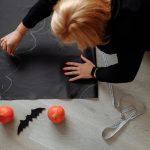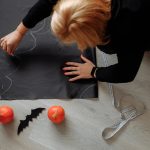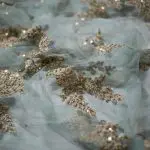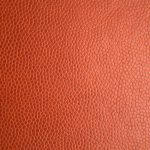You can create stunning theatrical effects by choosing the right gauze, scrim, or fabric based on transparency and texture, then hanging them taut using clips or tension wires to avoid wrinkles. Lighting plays a key role—backlighting reveals sheer qualities while side lighting highlights texture. Layering different fabrics adds depth and movement, especially with gentle breezes. Proper care and storage keep your materials performance-ready. Explore how combining these techniques transforms your stage visuals for enchanting scenes.
Table of Contents
Key Takeaways
- Use gauze for lightweight, translucent effects that create ethereal or ghostly visuals under stage lighting.
- Employ scrim to achieve dynamic opacity: opaque when lit from the front and transparent when backlit for dramatic reveals.
- Select fabric based on desired texture and transparency to complement scene mood and lighting conditions effectively.
- Manipulate fabric tension and layering to enhance depth, silhouette, and movement effects on stage.
- Maintain and store theatrical fabrics properly to preserve quality and ensure consistent performance effects.
Understanding the Properties of Gauze, Scrim, and Fabric
Although gauze, scrim, and fabric may seem similar at first glance, each material has unique properties that affect how they behave on stage.
When you work with gauze, you’ll notice it’s lightweight and slightly transparent, perfect for creating soft, ethereal effects.
Scrim, on the other hand, is woven tightly but with a loose weave, allowing it to appear opaque when lit from the front and transparent when lit from behind. This duality lets you reveal or conceal scenes effortlessly.
Scrim’s unique weave shifts from opaque to transparent depending on lighting, perfect for seamless scene transitions.
Fabric varies widely, but generally, it’s heavier and less translucent, providing solid backdrops or costume elements.
Understanding these differences helps you predict how each will interact with lighting and movement, so you can use them effectively to enhance your theatrical production’s visual storytelling.
Choosing the Right Material for Your Scene
You’ll want to evaluate different fabric types based on how much transparency and texture your scene requires.
Think about the durability and weight, especially if your material needs to hold up under frequent use or specific lighting.
Choosing the right balance will help you create the perfect theatrical effect.
Fabric Types Overview
Selecting the right fabric for your scene can dramatically enhance the theatrical effects you want to achieve. You’ll find several common options like cotton, muslin, and polyester blends, each offering unique properties.
Cotton feels natural and absorbs dye well, making it great for painted backdrops. Muslin is lightweight and versatile, perfect for scrims or layering. Polyester blends resist wrinkles and hold shape better under stage lights.
If durability is key, consider canvas or duck cloth—they withstand wear and tear but can be heavier. Silk and satin add richness but aren’t as practical for quick scene changes.
When choosing, focus on how the fabric interacts with lighting and movement, but save the details about transparency and texture for later. This overview sets a solid foundation for your fabric selection process.
Transparency and Texture
Understanding how a fabric’s transparency and texture affect your scene can change the way your audience experiences the performance. When you choose gauze or scrim, consider how light passes through it—transparency allows for ghostly images or reveal effects, while opacity creates solid backgrounds.
Texture adds depth; a coarse scrim can diffuse light, softening the scene, whereas a smooth fabric reflects light sharply, enhancing clarity. You’ll want to match your fabric’s qualities to your scene’s mood—delicate textures evoke dreaminess, while rougher textures suggest grit or realism.
Durability and Weight
Durability and weight play essential roles in choosing the right fabric for your scene. You want materials sturdy enough to withstand repeated handling, quick changes, and lighting setups without tearing or sagging.
Lightweight fabrics like gauze offer excellent transparency but mightn’t hold up well under heavy use. Conversely, heavier materials provide durability but can limit movement and flexibility on stage.
Consider the balance between strength and maneuverability based on your production’s needs. If your scene requires frequent repositioning or layering, opt for a fabric that’s durable yet light enough to handle easily.
Also, think about how the weight affects hanging and rigging; heavier fabrics need stronger supports. Choosing wisely guarantees your theatrical effects stay impressive and practical throughout the show.
Techniques for Hanging and Stretching Gauze and Scrim
Mastering just a few key techniques can help you hang and stretch gauze and scrim smoothly for any theatrical effect. Start by attaching the fabric to a sturdy pipe or batten using clips or sewn-in pockets.
Make certain the fabric is evenly distributed to avoid sagging. Use tension wires or ropes on the sides to pull the material taut, preventing wrinkles and folds. When stretching, work from the center outwards to maintain uniform tension.
Ensure even fabric distribution and stretch from the center outwards using tension wires to prevent sagging and wrinkles.
If you need to join multiple pieces, overlap edges slightly and secure them with stitching or tape for seamless continuity. Always check your rigging points for stability, and adjust tension as necessary throughout rehearsals.
These steps will guarantee your gauze or scrim stays perfectly flat and ready to transform your stage.
Lighting Effects to Enhance Fabric Transparency
Three key lighting techniques can dramatically enhance the transparency of gauze and scrim on stage.
First, backlighting is essential; by placing lights behind the fabric, you reveal its sheer quality and create striking silhouettes.
Second, use side lighting to emphasize texture and depth without overpowering transparency. This technique adds subtle shadows that make the fabric visually interesting.
Third, control the intensity and color temperature of your lights—cooler hues can increase transparency, while warmer tones soften the effect.
Avoid flooding the fabric with too much light from the front, as this flattens the image and reduces see-through qualities.
Creating Depth and Layers With Multiple Fabrics
You can create stunning depth by combining different fabric textures, letting each layer catch the light in unique ways.
Experiment with layering techniques to build visual interest and dimension on stage.
Combining Textures for Dimension
When you combine different textures like gauze, scrim, and other fabrics, you create a sense of depth that transforms a flat stage into a dynamic visual experience.
Mixing sheer gauze with the slightly opaque scrim adds contrast, while incorporating heavier fabrics introduces tactile variety. This contrast allows light to play differently across surfaces, enhancing dimensionality.
You can emphasize movement and focus by selecting fabrics with distinct textures—rough burlap against smooth satin, for example—making each layer stand out.
Varying opacity also contributes, as some fabrics partially obscure what’s behind them, inviting curiosity.
Layering Techniques for Visual Depth
Building on the interplay of textures, layering multiple fabrics reveals new dimensions of visual depth on stage. You can create dynamic scenes by combining transparent scrims with opaque fabrics, allowing light to pass through selectively.
Experiment with spacing layers at varying distances to enhance perception of depth. Alternating colors and patterns adds contrast, while using fabrics with different weights influences how they move and catch light.
Consider these layering techniques for richer visual effects:
- Place gauze scrims in front of heavier backdrops for subtle translucency.
- Overlap fabrics with contrasting textures to highlight details.
- Use varying fabric opacity to control light diffusion.
- Layer colors from lightest in front to darkest behind for gradient depth.
- Adjust tension on each layer to change fabric behavior and shadows.
These methods help you sculpt immersive theatrical environments.
Using Painted and Printed Fabrics for Dynamic Backdrops
Although gauze scrims create alluring light effects, painted and printed fabrics offer a different kind of versatility for dynamic backdrops. You can customize colors, textures, and scenes to suit your production’s mood instantly. These fabrics work well for bold visuals and detailed imagery that catch the audience’s eye from a distance. When choosing your fabric, consider durability, paint type, and print resolution to maintain vibrancy under stage lights.
| Fabric Type | Best Use | Key Advantage |
|---|---|---|
| Canvas | Detailed painting | Holds paint well |
| Polyester | Large printed scenes | Durable and colorfast |
| Muslin | Subtle textures | Lightweight and flexible |
Experiment with these options to create backdrops that truly transform your stage.
Incorporating Movement and Textural Effects
Painted and printed fabrics set a strong visual foundation, but adding movement and texture brings your stage to life in ways static backdrops can’t match.
You can manipulate gauze scrims and fabrics to create dynamic environments that shift with the actors’ movements or lighting changes. Consider how folds, ripples, and layering add depth and intrigue.
You’ll want to experiment with:
- Hanging fabrics loosely to catch air currents and create subtle motion
- Using fans or gentle breezes to animate lightweight scrims
- Layering different fabric textures to contrast and enhance visual interest
- Employing hand or mechanical movement to alter fabric positioning during scenes
- Combining matte and shiny surfaces to react differently under various lighting
Combining Fabric With Projection for Immersive Scenes
When you combine fabric with projection, you open up new possibilities for creating immersive and transformative scenes. Fabric acts as a dynamic canvas, allowing projections to add depth, color, and movement in ways static scenery can’t match. You can use gauze scrims to create ethereal effects, or heavier fabrics to sharpen imagery. The interaction between light and texture enhances mood and storytelling.
| Fabric Type | Projection Effect | Scene Application |
|---|---|---|
| Gauze Scrim | Ghostly, translucent | Dream sequences, spirits |
| Muslin | Soft, diffused | Outdoor landscapes, skies |
| Velvet | Rich, saturated colors | Dramatic, intense moments |
| Stretch Fabric | Dynamic, flexible | Abstract shapes, movement |
Choose fabric and projection thoughtfully to maximize impact and audience engagement.
Maintenance and Storage Tips for Theatrical Fabrics
Since theatrical fabrics endure frequent handling and exposure to lighting and stage effects, you need to maintain and store them properly to preserve their appearance and functionality.
Regular care extends fabric life and keeps your scenes looking sharp. Here are essential tips to help you manage your theatrical fabrics effectively:
- Clean fabrics gently by hand or with low-speed machine cycles, avoiding harsh detergents.
- Store fabrics rolled or folded loosely to prevent creases and damage.
- Keep storage areas dry, cool, and away from direct sunlight to avoid fading and mildew.
- Inspect fabrics routinely for tears, stains, or wear, repairing promptly.
- Label and organize fabrics by type and use for quick access during production.
Following these steps guarantees your gauze scrims and fabrics stay stage-ready for every performance.
Frequently Asked Questions
How Do Weather Conditions Affect Outdoor Gauze and Scrim Performances?
You’ll notice weather impacts gauze and scrim performances outdoors by causing fabric to flutter or sag in wind, while rain can make materials heavy and less transparent. Sunlight also changes how visuals appear on them.
What Safety Precautions Are Needed When Using Flammable Theatrical Fabrics?
Did you know over 50% of theater fires start from flammable fabrics? You should always use flame-retardant treatments, keep fire extinguishers nearby, avoid open flames, and guarantee proper ventilation to keep everyone safe during performances.
Can Gauze and Scrim Be Reused for Multiple Productions?
You can definitely reuse gauze and scrim for multiple productions if you handle them carefully. Just make sure to clean, store them properly, and inspect for damage to keep their quality and safety intact over time.
How Do Different Fabric Colors Impact Audience Perception?
Colors don’t just impact perception—they can hypnotize your audience! Warm tones ignite passion, cool hues calm, and dark shades create mystery. You’ll see emotions shift dramatically, guiding viewers’ feelings with every fabric choice you make.
What Are Cost-Effective Alternatives to Traditional Theatrical Fabrics?
You can use inexpensive materials like muslin, canvas drop cloths, or even repurposed bedsheets. These options are affordable, easy to paint, and versatile, letting you achieve creative effects without breaking your budget.
- Tetron Fabric for Table Linens: Elegance and Durability - June 18, 2025
- Tetron Fabric for Curtains: Style and Maintenance Guide - June 18, 2025
- Tetron Fabric for Bedding: Comfort and Care Tips - June 18, 2025






